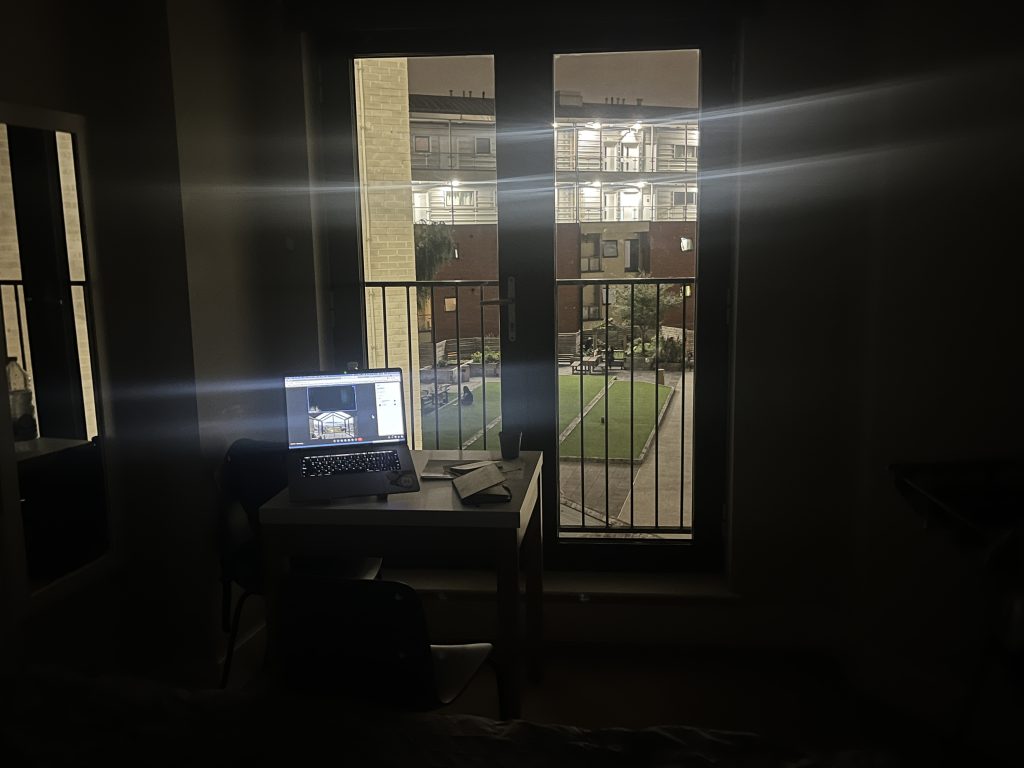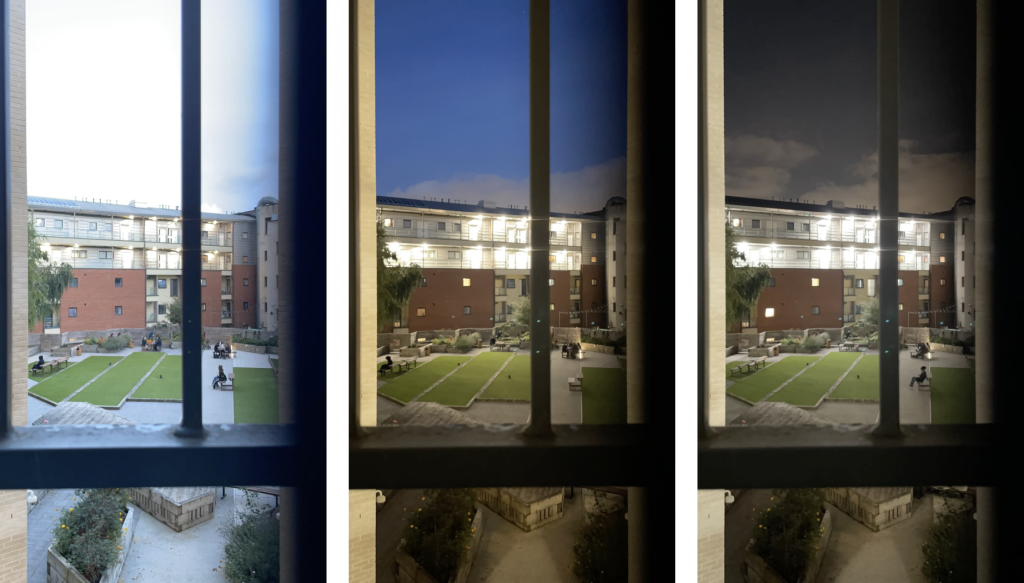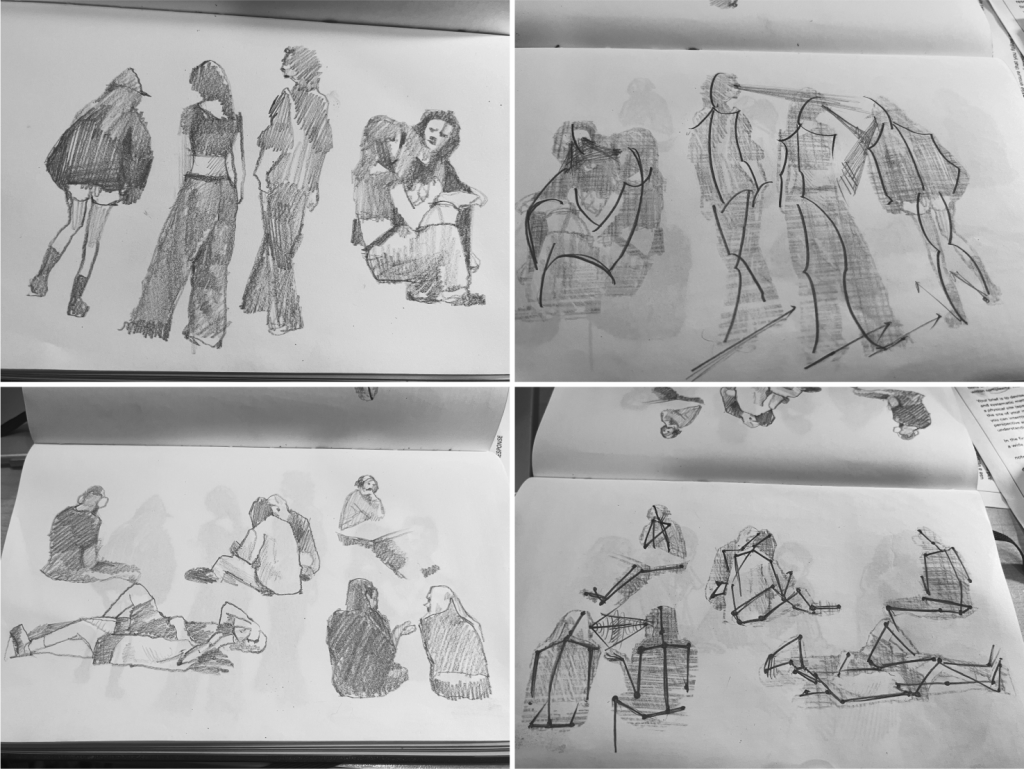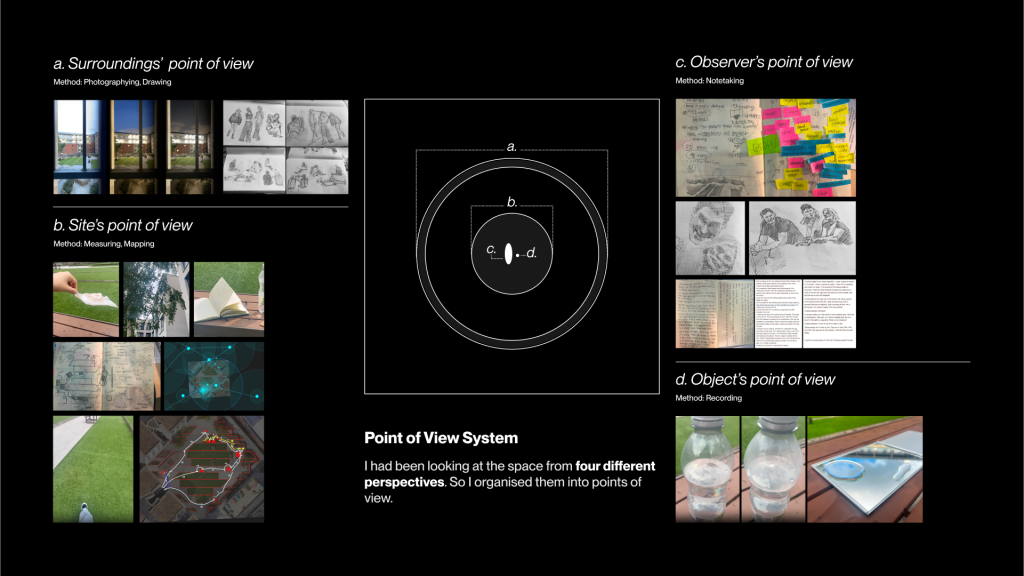Y1U1W1
Methods of Investigating
When we talk about graphic communication design as research, what we mean is that the tools, methods, and media of our discipline can be used to ‘see’ deeply and critically.
This type of ‘seeing’ can take form through observing, measuring, recording, collecting, dissecting, sorting, and so on. When applied rigorously and systematically, each of these ways of ‘seeing’—or methods of researching—can help you look beyond implicit assumptions or associations to find new and unexpected patterns within complexity. That is, new types of knowledge.
Your brief is to devise and apply a creative, open-ended, and systematic method of investigating some aspect of a physical site (space or place) of your choosing. Keep the site of your investigation small and specific so that you can interrogate it in detail, and consider how your perspective as a designer can produce a new way of understanding it.
In the first few days, you should experiment quickly with a wide range of methods of investigating, such as notetaking, photographing, sketching, diagramming, mapping, modeling, etc., to test how each changes your focus and enables you to see something different within your site. Determine which method is the most relevant or insightful, and then build it into a full investigation.
Surroundings’ point of view

I could see it from the window of my room. It was a public space, so there were lots of people coming and going, and I could see them behind the curtain.
Method 1: Recording


I photographed and sketched people’s movements, poses, and gestures on different days and at different times of day.
I found that it’s a place where dialogue and stories are created between people. I thought it was a place of events, where people interact and leave traces. I felt like I was a witness at a crime scene.
Then I thought about how to feel the space itself.
Site’s point of view
Method 2: Mapping

So I went into space myself. I sat on a bench and felt things that I couldn’t feel in my room. Like the wind and the sounds. With the tissues I took to wipe the table, I was able to observe the strength and direction of the wind by watching how it swayed.

Along with the wind, I could hear the sounds of people eating (bowls clinking) and talking. And I took notes.

I also tried to imitate the paths of the people who visit this place. I walked around and recorded my route and the number of steps I took.
Through maps and infographics that tell us about the environment of a space, I think I can quantify the nature of the space. It will allow me to see things that can provide variables for the stories of those who visit.
Observer’s point of view
Method 3: Storytelling / Writting

I thought of the space as a crime scene and thought about the flow of the story.


I wrote down what I saw and what I thought about the site. I tried to be objective, but it’s very subjective.
The space told me a story. It allowed me to find the core of the case.
Object/Material’s point of view
Method 4: Tracing

Just when I thought I had made all the observations I could, I got up to pack my things. And I saw the surface of the water in the bottle I had brought with me.
It had little vibrations that I couldn’t detect.
I thought I could see the information I was missing. Since the world vibrates, it might be possible to detect and record this accurately and abstractly at the same time.
*I haven’t found a way to visualise it yet. So I’m just filming the waves at different times in different places.
It is a courtyard surrounded by the dormitory building where I live. This site allows for constant observation throughout the day, simply by drawing the curtains and looking outside. Within this environment I can capture a myriad of dynamics at play – the expressions and gestures of the students, their food, the ever-changing weather, the security guards, and even the subtle rearrangement of chairs and tables. It’s the ideal canvas for experimenting with different modes of observation.
A room on the third floor of the halls of residence gave me the perfect vantage point. I can see everything and, if I’m quiet, I can even overhear some of their conversations.
The presence of curtains on the windows adds an intriguing dimension, allowing for surreptitious seeing while making me the unwitting subject of scrutiny. With this in mind, I’m contemplating with the idea of dimming the lights in the room during nighttime observations.

Feedback:
- Should try to create visual things more.
- Not enough depth of observation.
- Need to dig deeper into all the methods and decide on one.
Through this process, I realised that I had been looking at the space from four different perspectives. So I organised them into points of view.
Based on this, I thought it would be interesting to retrace my views and fill in the gaps I had missed.